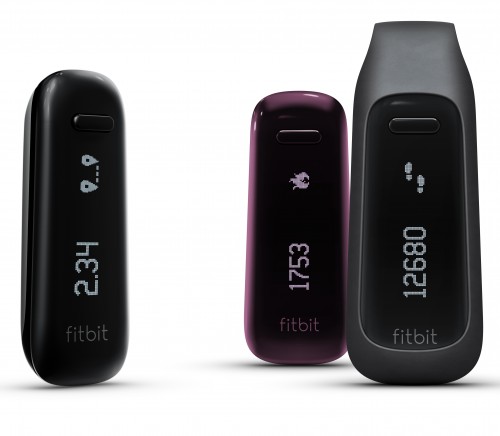When technologists and pundits weigh in on technology trends and products, we are always quick to point out that technology needs to meld with our lives as opposed to us changing to fit the device. In most cases that is true… but not all. My FitBit experience was different from many I’ve had in that I changed key items in my lifestyle as opposed to FitBit melding with me. FitBit literally changed my life, and I think there are lessons that we can derive from that.
Let me give a primer on FitBit first for those unfamiliar. FitBit develops a line of health and fitness wearables and a scale that connect to mobile, PC and cloud services. The wearables fall into three categories, one that’s worn on the wrist (Flex), one that’s designed to be clipped on (Zip), and one that fits hidden inside a pocket (One). These devices track steps, calories, distance, very active minutes, floors, hours slept, and times woken up from sleep. The scale, Aria, captures weight and BMI. All of this information is then fed into your computer or phone that you can view in an easy-to read phone or web dashboard.
I have the One wearable and Aria scale. Every morning when I get up, I’ll read the One’s display to see how long I slept. Then I’ll reset it by holding down the button for a few seconds to let it know I’m done sleeping. After that I jump on the Aria scale, which, as anyone know who’s trying to lose a few pounds like me, can be an “interesting” experience. Aria tells me my weight and BMI and then syncs directly with the cloud.
After getting dressed, I’ll make sure I pop the One into my pocket. I have goals setup for steps, so, like checking a smartphone for social media updates, I’m constantly checking the One’s tiny display to see where I am during the day with my number of steps and derived calories. If I haven’t met my goals, I will literally change what I’m doing. I’ll take the stairs more. I’ll walk to something versus driving. I’ll take the long way instead of the short-cut. At the airport, I’ll walk versus taking the people movers.
At night, I changed my behaviors, too. I will literally sleep with the One. It comes with a soft wrist band where you slip the One inside and then wear for the night. I then hold the button down for a few seconds that says I’m “sleeping”. When I first thought about wearing something at night, I had a visceral negative reaction. I don’t even like to wear any jewelry to bed and certainly didn’t expect to get comfortable with a wrist strap. After one night, it became reflex. It helped that my wife didn’t make any comments about the “geek” in me.
So why does any of this relevant to us high-tech folk?
I believe that the more changes one is willing to make in their life to fit in a tech device, the more important, meaningful and game changing the device. Typically, the underlying driver is something deeper than it appears on the surface. Look at smartphones as an example. We now place smartphone by our beds and take them everywhere we go, incessantly checking them hourly (by the minute in the case of my teenage girls). This is driven by the strong need to communicate and be part of a community.
My willingness to have the FitBit on my side or on my wrist 24×7 and change what and how I do things is driven by an even stronger need, the need to survive and thrive. I’ve made the personal connection with the device and my ability to live a healthier and longer life, so I’m willing to so many things differently that would be considered odd or anti-social. Let me take this one step further, and a bit on the scary side.
If you’re like me, when you hear of the word “implant” you think “artificial” or maybe some pain. If I’m so willing to make changes driven by the need to survive and thrive, if an implanted health device came along that could make me even healthier, what would I do? It’s scary to think I’d even consider it, but now I would. Let me step back a bit and close this out.
I believe that one of best ways to evaluate the stickiness and success of a future consumer tech product is to look at that unique need it can fulfill. Is it about love, community, communication, health, wealth? Those products that uniquely filled those needs or helped you get there will be the stickiest. Fitbit and the class of products like them making that personal connection with a lot of people, and I’m bullish about their future. This can also help us predict the tech future, as perilous as that is. Want to know how Google Glass or the Xbox One will do? Run it by the fulfillment test and see.
